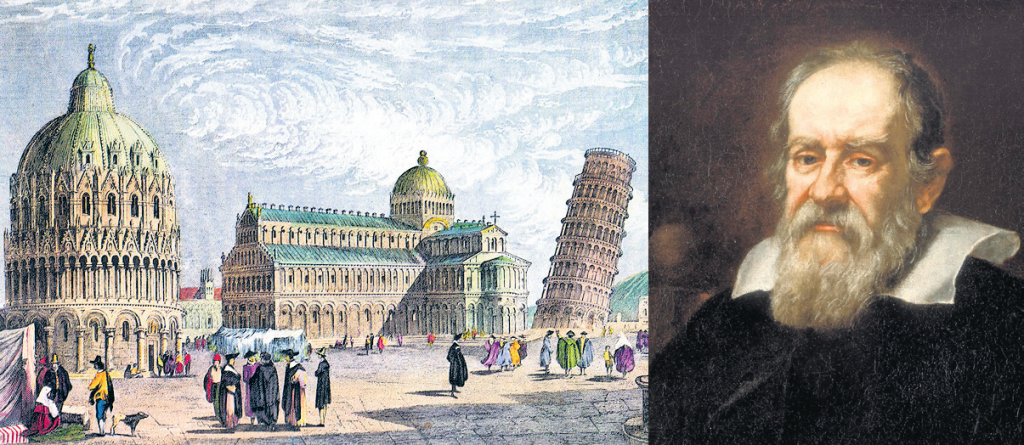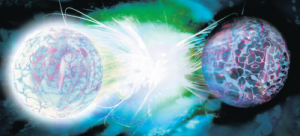FRIDAY, 27 APRIL 2012
It is a misconception that the poet is more of a dreamer than the scientist. Yet a huge range of crucial and inspired thought experiments—the exquisite dreams of scientists—have signposted scientific progress in almost every field. In particular, insights gleaned from mental laboratories have had world-changing consequences in physics and are helping to provide an understanding of our own minds.Galileo, one of the first modern scientists, unveiled a number of pivotal thought experiments fundamental to classical physics. Prior to Galileo, it was argued that Earth must be stationary. According to proponents of this argument, if Earth rotated to the east, a ball dropped from a tower would land to the west. In reality, though, we never see this happen, so Earth must be stationary. Galileo countered the argument for a still Earth by considering a man below decks on a ship moving with uniform velocity. The man can pace around his compartment and be completely unaware of the movement of the ship. From this thought experiment came the principle of relativity, which states that uniform motion cannot be distinguished from rest. Galileo’s ship informs us that it is too hasty to conclude that Earth is stationary—it could be rotating uniformly and the ball would plummet to the base of the tower nonetheless.
In his most legendary thought experiment, Galileo dropped a heavy cannonball and a lighter musket ball from the Leaning Tower of Pisa. Galileo’s contemporaries believed that the heavier cannonball would fall faster. He righted this by testing the case of a musket ball attached to a cannonball: based on accepted belief, since the combined mass of these two balls is greater than that of the cannonball alone, the compound object should fall to the ground faster than the cannonball alone. Yet, as the musket ball is attached to the cannonball, it should also slow the cannonball down. This implies that the compound object must fall faster than the cannonball yet also more slowly. The only way to avoid this contradiction is if both balls fall at the same speed. Through this thought experiment, Galileo revealed a stark truth about reality that is not obvious from our day to day experience—that is, the acceleration of bodies falling to earth is constant regardless of whether they are heavy or light. Like any good thought experiment, Galileo’s contemplations brought about a re-conceptualisation of reality, allowing science to switch tracks and divert from serious misconceptions.
Enlightening thought experiments are not confined to classical mechanics. In the field of quantum mechanics, Albert Einstein, Boris Podolsky and Nathan Rosen (EPR) constructed a thought experiment that suggests reality is much stranger than our physical expectations. The three were unable to accept the intrinsic uncertainty in the states of elementary particles and attempted to present it as an absurdity. This thought experiment is known as the EPR paradox and is based on a property of particles called spin. The EPR paradox describes a particle with zero spin decaying into two particles with opposing spins. When the particles are produced they would not have a spin in one direction or the other, but both at the same time. It is not until one of the particles is measured that this ‘superposition’ collapses and both particles have definite and opposing spins. Say the particles move off in opposite directions and travel for light years before we measure their spins. Upon measurement, their spins become fixed. One is up and one is down. According to one interpretation of quantum mechanics, the particles must communicate instantaneously across space so that each ends up in the spin state opposite to the other. Believing that such instantaneous interactions are impossible, Einstein concluded that the particles must have possessed the spin states all along. Therefore, quantum mechanics cannot completely describe reality.
It was down to John Bell to prove Einstein wrong. He set up an inequality which, if violated in nature, would show that the ‘action at a distance’ Einstein rejected must in fact occur. Following this, Alain Aspect showed experimentally that Bell’s inequality is violated. In the end, what was intended as a thought experiment to question quantum theory paved the way for establishing a fundamental, unsettling fact about the nature of reality—non-local interactions between particles can and do happen.
Einstein was a master and great advocate of the art of thought experiments. At 16, he lighted upon his famed thought experiment of chasing a light beam. When the observer, in superhero style, reaches the speed of light, the beam would appear to be stationary. The young Einstein, however, realised that such a phenomenon is never seen. After a period of gestation, this insight gave rise to special relativity, which states that the speed of light is the same for all uniformly moving observers. If you pursue a light beam, it will still streak away from you at the same speed it would have if you were standing still relative to it. This demonstrates the way in which thought experiments can identify loose threads in our thinking and tug out the most apt models of our universe.
For the mind to comprehend itself would be as astounding as comprehending the fundamental nature of reality. In attempting to grapple scientifically with consciousness and whether mind is more than matter, philosophers have also proposed many thought experiments. One puzzling kind is where one experiment is accompanied with another that undermines it. Consider, for example, the thought experiment about colour vision dreamt up by the philosopher Frank Jackson. Mary, a neuroscientist, is locked away in her laboratory and can only see in black and white, yet she knows every physical fact about colour, including how the brain processes it. Upon escaping the lab for a walk one spring day with the flowers all in bloom, Mary sees colour for the first time. Jackson proposed that she would exclaim, “Now I know what it feels like to see colours!” She appears to have learnt facts about colours that are not physical, suggesting that an explanation for consciousness cannot be coaxed out by science. In response, philosopher Daniel Dennett proclaimed that Mary would remark, “Colour perception is exactly as I thought!” suggesting that science does explain how the mind works. Now we have a dilemma: what, in truth, would Mary say? Only real experimentation could show us whether consciousness is amenable to a physical, scientific explanation or not.
The subtle power of thought experiments to shed light upon tough problems has itself been the subject of research. It is believed that a scientist constructs a narrative mental model of a physical situation and applies logical reasoning to follow the situation through to its end point. As thought experiments are based on our experiences of the world, the inferred outcome is the one we expect based on the physical information defining the mental model. Subsequently, this outcome can be used to theorise and experiment in the real world, making thought experiments an incredible aid to comprehending the physical world. Thus, our quintessential image of the scientist should be of one catching up with a streak of light.
Beth Venus is a 1st year undergraduate studying Natural Sciences



